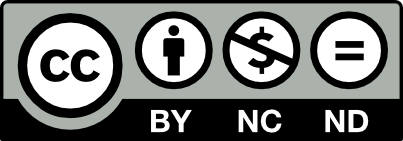This page is licensed under Creative Commons under Attribution 4.0 International. Anyone can share content from this page, with attribution and link to College MatchPoint requested.
6 Common Myths About Impressing Admissions Officers (and What You Really Should Focus On)
Navigating college admissions can be confusing, especially with so many myths circulating. From the misconception that perfect grades guarantee acceptance to the belief that knowing someone at the college will get you in, these myths can steer students off course. In reality, admissions officers value authentic engagement, commitment, and growth over any "secret formula." By focusing on what genuinely matters—initiative, impact, and a clear sense of self—students can build applications that truly stand out.

Here, we clear up six of these myths and offer guidance on what truly makes a difference.
Myth 1: Perfect grades are everything
Strong grades matter, especially in courses that match your academic direction. At many selective colleges, plenty of applicants already meet the academic bar, which means readers look closely at how you challenged yourself and how you responded when the work got hard. They also consider the context of your school, available courses, and limits on advanced options. A clean transcript with nothing else does not tell a full story.
Focus instead
Aim for rigor with support, not rigor at any cost. Choose advanced courses that relate to your interests, then back them up with habits that lead to steady success, office hours, tutoring, and study groups. If your school caps advanced classes or does not offer a course you need, use community college or dual enrollment to fill gaps. An upward trend across sophomore and junior year is powerful. If you had a dip, explain what changed and how you built better systems. Let your choices show purpose, not just pressure.
Try this
Pick one target subject for growth this term. Set a weekly plan that includes a standing office hour, one peer study session, and a brief self review after each assessment. If you lack a needed course, identify a dual enrollment or community college class that fits your path, then meet with your counselor this month to confirm logistics. Keep a simple progress log, date, topic, what worked, what to change next time. At the end of six weeks, summarize what improved and what you will adjust.
Myth 2: You need a long list of activities
Application readers can tell when a list was built for show. A crowd of short-term clubs does not help. What stands out is a smaller set of lanes where you show time, growth, contribution, and some form of leadership, formal or informal. Leadership can look like teaching others, improving a process, or building something useful for your community.
Focus instead
Select two or three lanes that grow from your interests, one that is academic, one that is service or work, and one that expresses creativity or community. Within each lane, move from participation to responsibility. Start a project inside an existing group, help run a small event, or improve a tool that others will use. Track outcomes that matter, people served, hours saved, dollars raised, or skills taught. Reflect on what you learned and what you would do differently.
Try this
Choose one current activity and outline a 60-day improvement plan. Identify a need, propose a small project, who benefits, what success looks like, and how you will measure it. Ask an adult sponsor to meet for ten minutes every two weeks to check progress. Invite one younger student to shadow you so the work continues after you. At the end, write a short summary of what changed and share it with your sponsor and team.
Myth 3: A connection at the college will get you in
A contact can offer insight about programs and culture. It does not make admissions decisions. Your application still has to show preparation for the major or college division you are targeting. This is especially true in high-demand areas like computer science, business, nursing, and engineering, where preparation and evidence of fit carry real weight.
Focus instead
Align your courses, projects, and roles with the field you plan to enter. For engineering and computer science, that usually means math through calculus if available, lab science strength, and hands on builds or code with documentation. For business, show quantitative readiness, communication, and roles that involve planning or operations. For health fields, prioritize biology and chemistry, plus patient facing service or certified roles if possible. Make the thread easy to follow, what you learned, how you applied it, and how you plan to continue.
Try this
Create a one page “fit to major” map this week. Three sections, academics, projects, community. List courses taken and planned, list one project you built or analyzed, and list one role that serves others. Add a next step in each section, a new class, a project extension with a deliverable, and a role with more responsibility. Share this with a counselor or mentor and ask for one suggestion per section.
Myth 4: You must pay for a prestigious summer program
Price tags do not impress on their own. Admissions teams read for substance. A summer job, family responsibilities, research with a local mentor, or an independent project can be just as compelling as a name brand program when you can explain the purpose and the outcome. Your summer should look like a natural extension of your school year story.
Focus instead
Choose a summer plan that builds skills, gives you responsibility, and connects to your interests. A job shows reliability, teamwork, and time management. Service that meets a real need shows empathy and initiative. A self directed project shows planning and follow through, especially if you share the result with others. Name your goal ahead of time, then measure what you produced or who you helped.
Try this
Write a one page summer plan by the end of this month. Include a clear goal, weekly schedule, a mentor or supervisor you will check in with, and a concrete outcome, a short report, a website, a training for younger students, a dataset you cleaned and analyzed. If you are working, ask for one added responsibility by week three, closing, training a new hire, or improving the schedule. If you are doing a project, set two public deadlines so you ship work, even if imperfect.
Myth 5: You need your entire life plan by junior year
Colleges admit learners who are still becoming. You do not need to lock in a career at sixteen. What readers want to see is intentional exploration. Try things, notice what happens, and adjust. That pattern translates into success in college.
Focus instead
Use short experiments to test your interests, a class, a shadow day, a small build, a conversation with someone in the field. After each step, reflect on what you liked, what you did not, and what you want to try next. If you change direction, show why, not just that you moved. Curiosity, adaptability, and real follow through read as maturity.
Try this
Schedule two informational conversations this month with people who do work you are curious about, one practitioner and one student a few years older than you. Prepare five questions that ask about a day in the life, surprises in the field, and advice for getting started. After each talk, write five sentences, what I learned, what I am unsure about, and the next step I will take within two weeks. Then take that step and note what you discovered.
Myth 6: A clever essay topic is the secret
You do not need a dramatic story or a rare experience. You need a clear, honest voice and a window into how you make choices. Readers want to understand how you think, how you handle tension, and how you will add to a community.
Focus instead
Choose a story rooted in a real decision. Show two or three moments rather than telling us your traits. Let specific details do the heavy lifting, a line you said, a problem you solved, a mistake you corrected. End with what changed in you, not a grand lesson. Connect the experience to how you will learn and contribute on campus.
Try this
Draft a paragraph that begins with a concrete choice you made. Add one scene that shows a challenge and one scene that shows a response. Read it out loud to someone who knows you. Ask them where your voice sounds most like you, then cut anything that sounds like a brochure. Add one sentence that links what you learned to what you will do next year.
Bonus myth: There is a secret formula
There is no fixed recipe that guarantees admission. There are patterns that help. Depth over busyness. Fit to major over general claims. A balanced list over wishful thinking. Clear planning for early rounds, including how financial aid, merit, and binding options work. Awareness that some public flagships are far more selective for out of state applicants, which changes the math.
Focus instead
Build a list with true reach, target, and likely schools you would be happy to attend. Understand how early decision, early action, and priority deadlines affect your chances and your finances. Prepare for more deferrals in early rounds at highly selective colleges, and keep your match and likely options strong. Control what you can, coursework, habits, projects, service, testing if you choose to test, and keep your reflection current so your essays and interviews are grounded in recent growth.
Try this
In the next two weeks, create a three tier college list with at least two likelies you would be excited to attend, and confirm the out of state admit context for every public flagship on your list. Note early deadlines and scholarship dates in one calendar. If you are considering early decision, have a clear family conversation about cost and fit. Write a short plan for what you will do between November and February in case of a deferral, updated grades, new responsibilities, and concrete contributions you can report.


